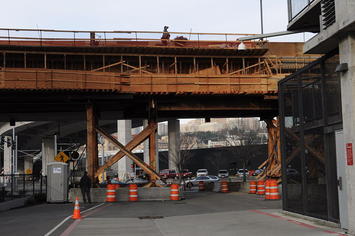
President Trump’s proposed trillion dollar plus infrastructure program represents a rare, and potentially united feel good moment. Yet before we jump into a massive re-do of our transportation, water and electrical systems, it’s critical to make sure we get some decent bang for the federal buck.
In principle, improving our physical connectivity should improve the economy, particularly in more rural areas where moving goods is often challenging. Modernizing our dilapidated waterways, protecting coastal cities from floods, preparing better systems to store water as well as fixing the roads and eliminating traffic bottlenecks are genuine priorities.
Yet, as can be seen by examples from Japan, infrastructure development can also create boondoggles that enrich vested interests but not spur economic growth. Like a child in love of shiny things, politicians tend to embrace infrastructure not so much for its efficacy, but to advance their careers and political agendas.
What can go wrong?
To see how bad decisions can be, look at California, a state which once led in economically critical infrastructure but now striving to present the worst possible example. Over the past two decades, California has become among the states least committed to new infrastructure, despite absurdly high tax levels. And when the spigot has been turned on, it’s been largely to socially engineer people from roads, which provide nearly all trips, to transit.
The losers here are Californians, with massive spending on transit rail rejects people cannot use, while the roads they depend on are among the nation’s worst. Less than 2 percent of the state’s motorized travel is on transit and ridership is declining. Worse, transit provides little mobility compared to cars. In the largest California metropolitan areas, the average worker can reach 65 times as many jobs by car as by transit in 30 minutes, even with our traffic congestion. No wonder that poorer people in Los Angeles are increasingly buying their own cars, a development that UCLA researchers acknowledge is valuable, but then express the view that “driving is too cheap” in a state with high gas prices and an excessively high cost of living.
Rather than improve mobility, Gov. Jerry Brown has obsessed on a high-speed train with costs more than twice original projections, yet, with now slower travel times. This vanity project could place enormous strains on the state budget, while doing little, or nothing, to reduce greenhouse gases. Prominent Democrats, like Senate Transportation Chairman Jim Beall, D-San Jose, have turned skeptical while the liberal columnist George Skelton has uncharacteristically suggested Brown’s legacy could well end up as a “boondoggle bullet train to nowhere.”
Read the entire piece at The Orange County Register.
Joel Kotkin is executive editor of NewGeography.com. He is the Roger Hobbs Distinguished Fellow in Urban Studies at Chapman University and executive director of the Houston-based Center for Opportunity Urbanism. His newest book is The Human City: Urbanism for the rest of us. He is also author of The New Class Conflict, The City: A Global History, and The Next Hundred Million: America in 2050. He lives in Orange County, CA.
Wendell Cox is principal of Demographia, an international public policy and demographics firm. He is a Senior Fellow of the Center for Opportunity Urbanism (US), Senior Fellow for Housing Affordability and Municipal Policy for the Frontier Centre for Public Policy (Canada), and a member of the Board of Advisors of the Center for Demographics and Policy at Chapman University (California). He is co-author of the "Demographia International Housing Affordability Survey" and author of "Demographia World Urban Areas" and "War on the Dream: How Anti-Sprawl Policy Threatens the Quality of Life." He was appointed to three terms on the Los Angeles County Transportation Commission, where he served with the leading city and county leadership as the only non-elected member. He served as a visiting professor at the Conservatoire National des Arts et Metiers, a national university in Paris.
Photo: Joe Mabel [GFDL or CC BY-SA 3.0], via Wikimedia Commons












